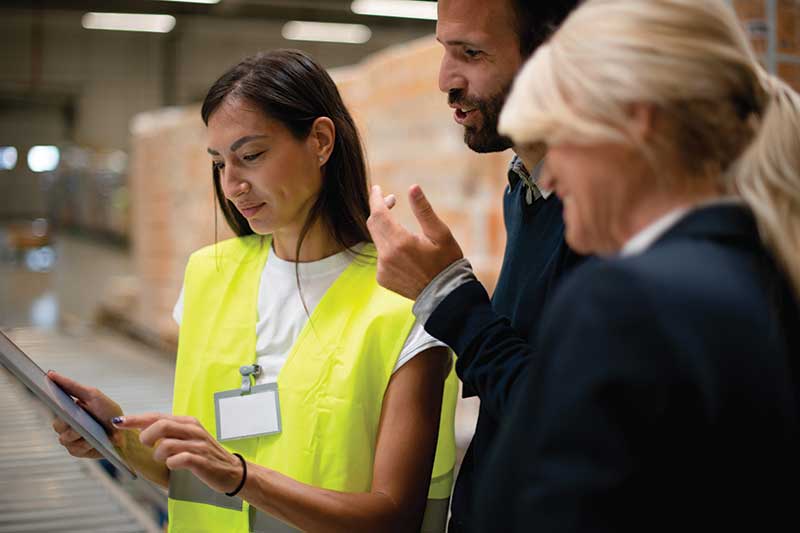Where is fleet management headed?
Telematics and fleet software has long been used for sensor and CAN-bus data, but a new era of AI-driven analytics is approaching.

Telematics and fleet software solutions offer core benefits that start with digitizing safety checklist processes, while also tracking impacts and other safety incidents, and gathering data on truck usage.
These core lift truck fleet management benefits offer value by improving safety and providing various metrics on utilization, maintenance costs and asset uptime, says Jim Zeitunian, CTO for Powerfleet, which offers such systems.
Zeitunian says to look for fleet software to get more predictive, with advanced analytics that make deeper use of sensors, tags and real-time location data, running all the data through algorithms to uncover patterns and insights useful to an operation.
“Industrial fleet management began as a safe and secure way for operators to run through their safety checklists, and from that it’s expanded into a way to glean all types of insights on truck utilization, collisions and maintenance, operating behavior and incident trends, all to manage costs. Advanced analytics is where this space is headed now,” Zeitunian says. “There are a whole bunch of additional insights and risk profiles that fleet software will be able to provide to help with both core objectives like safety, and to save operations time and money.”
Tag technology such as extended range Bluetooth tags will feed additional data into fleet software solutions, Zeitunian predicts. With more data coming from tags, or sensors which detect the amount of load on forks, as well as data from the truck controls through telematics, fleet software will be able to apply machine learning algorithms to develop dynamic risk profiles useful for an operation. These can also be correlated with labor data from a labor management system, or task data or plans from a warehouse management system (WMS), he adds.
For example, Zeitunian says, advanced analytics could look out over a 90-day window of expected truck loading volume at outbound docks, and, based on congestion models and risk profiles, determine that some changes to dock scheduling could reduce congestion and decrease the risk of incidents.
The change might entail scheduling docks so the fastest moving products and loads get allocated to certain docks to reduce congestion and risk, with the fleet software sending these insights to a WMS or dock scheduling solution as a recommendation.
“We want to be able to pass the insights on to a system of record, or to an easy-to-read dashboard, providing the opportunity to make adjustments,” says Zeitunian. “There’s a lot of untapped potential in using real-time data to build models and risk profiles that could help you improve throughput or gain efficiencies without raising the risk level.”
Today, collision avoidance systems based on camera technology are useful for tactical pedestrian warnings and alerts, Zeitunian says, but you’re limited by what a camera can see in its field of view, as opposed to warnings driven by multiple streams of sensor and tag data being crunched in real-time by advanced chipsets on telematics devices attached to trucks in a fleet.
The good news, he adds, is that major chipmakers are making it easier for vendors in the telematics market to run advanced logic on these chips, enabling richer edge computing and analytics possibilities for forklift fleet management. Expect more predictive analytics that create models from all these data streams, Zeitunian concludes, some of it aimed at throughput improvement or cost reduction, and some of the analytics and alerts aimed at fleet safety.
“Think of the future of fleet management as being based on a network of forklifts in effect talking to each other about positioning or other factors to help avoid collisions or damage to assets or stock,” he says. “Fleet management will become less 2D in nature, and more like a 3D representation of a warehouse, letting you know the important trends that matter to the business as it relates to safety or efficiency.”

Article Topics
PowerFleet News & Resources
Powerfleet’s newest AI-powered solution meets need for greater pedestrian safety in the warehouse Powerfleet and MiX Telematics announce business combination Where is fleet management headed? Mitsubishi Logisnext Americas teams up with PowerFleet on telematics solution PowerFleet outlines how forklift telematics can support social distancing efforts PowerFleet recognized as critical for Covid-19 response PowerFleet launches new updates to PowerFleet Expert Suite More PowerFleetLatest in Materials Handling
Walmart chooses Swisslog AS/RS and software for third milk processing facility NetLogistik partners with Vuzix subsidiary Moviynt to offer mobility solutions for warehouses Materials Handling Robotics: The new world of heterogeneous robotic integration Lucas Watson appointed CSO for Körber’s Parcel Logistics business in North America Hyster recognizes Dealers of Distinction for 2023 Carolina Handling names Joe Perkins as COO C-suite Interview with Keith Moore, CEO, AutoScheduler.AI: MODEX was a meeting place for innovation More Materials HandlingAbout the Author
Subscribe to Materials Handling Magazine

Find out what the world's most innovative companies are doing to improve productivity in their plants and distribution centers.
Start your FREE subscription today.
April 2024 Modern Materials Handling

Latest Resources










